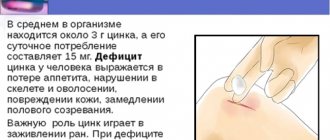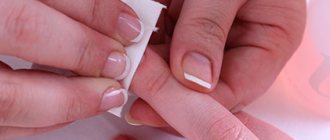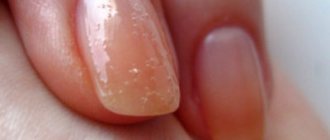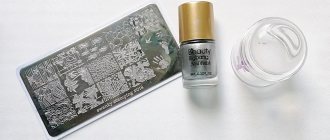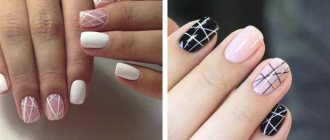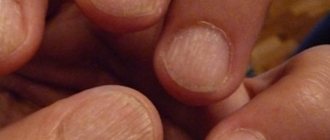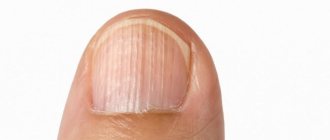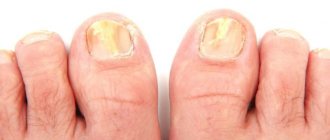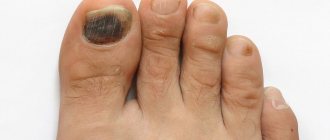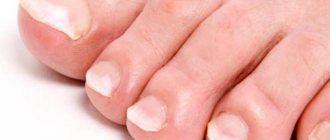Home page » Beauty » Nails
Author of the article
Svetlana Pavlikhina
Reading time: 7 minutes
AA
A beautiful manicure using gel polish has many advantages. It lasts for a long time, does not wear off and is not damaged by mechanical stress. But sometimes it happens that cracks form on the gel coating.
Why does gel polish on nails crack and how to prevent this problem? Let's consider the main reasons for this phenomenon.
Causes
There are many factors that contribute to gel polish cracking on your nails.
Such reasons include:
- improper coating application;
- poor quality manicure materials;
- applying the gel in a layer that is too thin or thick;
- influence of external factors;
- unhealthy condition of the nail plate;
- incorrectly selected drying lamp;
- the presence of a sticky and greasy layer on the surface.
Gel polish can crack on both natural and extended nails. The integrity of the gel surface depends on the reason that provoked the development of this phenomenon. For example, if the manicure technique is violated, small cracks appear on the second day.
Results of incorrect application
The gel coating on the nail plate begins to crack if the technology was violated during the procedure.
Poor quality manicure results from the following reasons:
- improper cuticle removal;
- oily layer on nails;
- nails are not completely dry;
- the gel was applied to the plate after applying the cream;
- when gel polish is applied in a very thin or thick layer;
- if the base product and gel are from different manufacturers;
- with improper polishing of the nail surface.
If the master does not follow the application technology, the gel polish begins to crack on the nails within the first week after the manicure.
External factors
If the varnish is cracked, this may be due to external factors. The substances contained in household chemicals are considered the most aggressive to gel manicure.
The nail coating is damaged by:
- washing powder;
- some creams and ointments;
- detergents (especially those that clean the surface of bathtubs and sinks and contain abrasive particles);
- soap
The integrity of the gel is compromised when working with soil without protective gloves. Temperatures that are too low or high also reduce the wear time of gel polish.
Nail condition
Most often, cracks form due to a pathological condition of the nails. If the stratum corneum is very thin or soft, then the gel polish begins to quickly become damaged.
Under frequent exposure to water, powder, and detergents, the coating bursts because it does not attach well to the nail surface.
Thick layer of gel polish
Cracks begin after the material is applied too thickly.
The layer at the top of the manicure dries and decreases in size. The gel coating below, on the contrary, stretches. This process results in cracking .
Drying lamp
It is recommended to choose a lamp for drying manicure with gel polish with a power of more than 36 W.
When this indicator is lower, the product does not dry completely. The sides remain wet.
To check the quality of drying, press on the coating with a pusher. If a dent appears, the gel has not dried. With incomplete drying, strength decreases.
Exposure to water
Frequent contact with water negatively affects manicure. Washing your hands frequently can cause your manicure to crack.
Washing dishes, washing, wet cleaning, which is carried out daily without gloves, significantly deteriorates the quality of the gel on the nails, as a result of which cracks begin to appear.
Remaining sticky layer
If the sticky layer is applied incorrectly or is not completely removed, then the gel polish does not adhere well to the nail plate. Cracks due to its residue appear within a few days.
Poor quality materials
One of the common reasons for cracking gel on nails is the use of low quality materials.
Usually the price for these accessories is low. Such materials are not branded.
Other reasons
Gel polish also cracks due to the following reasons:
- use of antibiotics;
- stomach diseases;
- pathologies of the heart and blood vessels;
- diseases of the endocrine system.
Such a manicure can be damaged due to hormonal changes in women, including during menstruation and pregnancy.
In rare cases, individual intolerance to the components included in the manicure product is possible.
Reasons for finishing
The second most common reason why gel polish cracks is the destruction of the top coat layer. The top is applied to the gel polish to protect it from the aggressive effects of external factors. Therefore, the quality of the finishing coat directly affects the longevity of the entire manicure.
Different texture
Gel polish, base and finish after processing under the lamp can be hard or soft in texture. If you use products of different textures at the same time, cracks will appear on the second or 3-4 days.
Important: “hard” products are used for extended nails, and “soft” products are used for natural ones.
You can check the strength of the product like this: apply the contents of all your bubbles to polyethylene and place it under a lamp, after fixing, check for flexibility.
Applying gel polish
Incompatibility
If the gel polish cracks at the tips of the nails, then the cause of the problem is the incompatibility of the base coat with the finish coat. In many cases, it is acceptable to use funds from different companies, but sometimes they can reject each other. The best option would be to use varnish, top and base from one manufacturer or buy a top from well-known brands.
Drying lamp
The top must be fixed in the lamp. In this case, the drying time must be strictly defined depending on the type of lamp. So, the finishing coat should be kept in a UV lamp for 2-3 minutes, in an LED lamp - 0.5-1 minute, CCFL - 1 minute. As a rule, the bottle indicates how long drying should take place.
LED lamp
Important: do not forget to change the lamps in the UV lamp and wipe the reflective surfaces of the device.
Harsh chemicals
If cracks and cobwebs appeared in the first week of wearing a gel manicure, then the reason lies in the frequent use of household chemicals. Washing dishes, cleaning the bathtub, kitchen, tiles, etc. using chemicals with unprotected hands will certainly ruin even the best-quality manicure.
Advice: contact of gel polish with aggressive chemicals should be prevented. Hands should be protected with rubber gloves, i.e. Your manicure and the beauty of your hand skin will be preserved.
Gel polish coating in light shades
Reasons depending on surface type
Natural nails
On natural nails, gel polish can also crack.
The following factors contribute to this:
- frequent hand washing;
- changes in hormonal levels during the procedure;
- long-term use of antibiotics;
- low-quality manicure accessories;
- hormonal changes in the body;
- some diseases;
- incorrect application of the gel.
An unhealthy nail plate is a common cause of cracks.
Extended nails
Reasons that can trigger the formation of cracks on extended nails:
- non-compliance with extension techniques;
- incorrect application procedure;
- mechanical damage;
- poor quality material;
- applying a thick or thin layer.
Contact with water and household chemicals also negatively affect the gel on extended nails.
How to apply gel polish so that it doesn't crack?
First of all, it is necessary to properly prepare the nail plate for the upcoming procedure. First you need to degrease the nail, carefully remove the pterygium and treat the area near the cuticle. Give the nail a “matte” shade using a grinder or buff, removing unnecessary shine.
When applying the coating, it is necessary to take into account the compatibility of the components used , the incompatibility of which with each other can also lead to a short-lived manicure.
To create a manicure, choose only trusted professionals with a good reputation.
Each layer of coating must be applied extremely carefully. Before applying the next layer, make sure that the previous one is thoroughly dry . It should also be noted that applying too thick or thin a layer of basecoat or varnish will lead to rapid deterioration of the appearance and cracks.
And, of course, do not forget about the quality of the products used . Don’t save money and buy good quality products from well-known brand manufacturers.
Time factor
Cracking after application
Immediately after application, the gel polish may crack as a result of:
- use of low-quality accessories and materials;
- improper preparation for the procedure;
- violations of execution technique.
Cracking begins a few hours after the procedure.
Cracking on the second day
On the second day, cracks appear on the nails if the gel polish is applied to a woman who started menstruating the day before.
Cracks form when a master uses low-quality gel polish or neglects the rules of manicure technique.
Why does gel polish crack?
Next, we will look at the reasons why the top coat of gel polish cracks at the tips of the nails or along the entire surface of the nail like a cobweb.
Reason 1 – the lamp is not powerful enough
For ultraviolet, a power of 36 watts is recommended, provided that all the bulbs in it work properly. If you have a less powerful lamp, then you will need to dry the gel polish, base and top coat in it longer – up to 3 minutes. In addition, it is recommended to regularly clean and wipe off dust from the mirror bottom of such lamps.
Reason 2 – too thick layer of top coat
You should not “fill” your nail with topcoat.
- Firstly, as you already understand, this is fraught with the appearance of cracks soon after applying gel polish.
- Secondly, if the top is liquid, then it will flow onto the side rollers, and this is not at all camilleaux.
- Thirdly, it simply won’t have time to dry. The top is applied in a thin layer with almost rubbing movements.
If necessary (and in some designs, as with rubbing in pigment, it is necessary), then apply a second, equally thin layer of top.
Reason 3 – discrepancy between the plasticity of the top and nail
I think every girl is able to determine whether her nails are soft or hard. So the top should be chosen based on this. The fact is that tops can also be “hard” and “plastic”. And if you apply, for example, a hard top coat to soft nails, you will get cracks in the top coat on the gel polish.
How to determine which top you have: soft or hard? It’s very simple: apply a strip of top coat to a plastic bag or film as if you were doing it on a nail, and dry it in your paw. Then separate this strip from the backing and try to wrinkle it.
- If it bends, the top is soft,
- If it breaks, the top is hard.
Reason 4 – using a gel topcoat
This is a very common mistake among beginners or those who do extensions and switch to gel polish: they think that the gel top coat is quite suitable for gel polish. But believe me, it has a completely different composition.
Reason 5 – forgot to remove the sticky layer
Here it is important not only not to forget, but also to use a special tool for this. After all, washing it off with soap is not right!
By the way, sometimes the stickiness (dispersion layer) is not particularly noticeable to the touch. Because of this, you may think that the top has no stickiness and do not remove it. Therefore, carefully read this information from the manufacturer. In general, it is better to buy a top with a sticky layer: as reviews show, it is more reliable.
Reason 6 – bubbles in the top
Very often, when applying a top coat, you can see small bubbles in it. If you dry the coating without removing them, cracks will soon appear from the bubbles. How to avoid them appearing in the top:
- Do not shake the bottle before use. Instead, rotate it between your palms for a while.
- Apply the top coat in a thin layer - this way the likelihood of bubbles appearing is much less.
Reason 7 – top defect
I will write down this reason here, since I cannot exclude this point either. Many people name among the bad ones, for example, Bluesky or Formula Profy tops. However, I would not say that this is a manufacturer's problem. For example, I used the first top coat and had no cracks. However, I cannot exclude the possibility of a defective batch or even a fake of the gel polish itself. The only option here is to change it to something else.
Reason 8 – frequent contact with water without gloves
And especially with the use of chemicals. Girls, let's think about our hands - after all, first of all, this affects them, and gel polish too:) I recently began to feel constant dryness of my skin after contact with water, so I now train myself to do cleaning and washing dishes in gloves.
Cracks at the tip of the nail
On the tips of the nails, the gel polish is most often damaged when the plate becomes flexible and brittle. When a manicurist performs household work without gloves, the edges of the nails quickly crack.
The process of damage to this part of the nail begins under the influence of the following factors:
- contact with water;
- low or high air temperature;
- mechanical damage;
- technical violation;
- frequent use of household chemicals;
- low-quality varnish gel or base product.
Usually, cracking at the ends of the plate begins after a week, when the rules of the technique are violated.
Wizard errors
Sometimes, when creating a manicure, the artist makes mistakes that cause the gel polish to crack on the nails. A violation of technology can occur at any stage of the coating.
Now we’ll find out why gel polish on nails cracks. The list of reasons is in front of you:
- Low quality materials and tools and expired products were used.
- Combination of base, varnish and topcoat from various manufacturers. Quality also affects durability. Experts do not recommend using “2 in 1” products, since they are significantly inferior to individual products.
- Unprofessional treatment of the nail plate. It has a thin skin that needs to be removed along with the cuticle. If this is not done, the varnish will never adhere perfectly to the plate. As a result, the gel coating will begin to peel off.
- Before the procedure, cream was applied.
- The coating is applied to wet or not completely dry nails. Each layer must be thoroughly dried. To achieve this with a low-power ultraviolet lamp, you should simply increase the procedure time.
- Incorrect degreasing of the plate. We are talking about applying a special spray without using cotton pads or napkins, directly on the nail itself. The product can be replaced with nail polish remover, which contains alcohol or acetone.
- The polishing was done poorly, which is why the nail did not become completely smooth.
- The coating technology is broken. The cut of the nail is not covered with varnish.
- Dust particles got onto one of the layers. Small debris or specks should be removed immediately. To avoid such a problem, the master needs to properly arrange his workspace. All unnecessary items must be removed in advance.
- A too thick or thin layer of base, color, or top was applied by mistake.
Prevention measures
To prevent cracking of the coating, the following recommendations should be followed:
- Take proper care of your nails.
- Try to avoid exposure to external factors.
- Don't bite your nails.
- Strengthen the plate with a special preparation.
- Do not scrape off gel polish with a metal tool.
- To remove manicure, use only a special product - remover.
- Wear gloves when doing laundry, washing dishes and doing household work.
- Do not visit solariums and saunas often.
- It is advisable not to do a manicure during menstruation, as well as in the early and late stages of pregnancy.
- In frosty weather, wear gloves or mittens.
- Get your manicure done only by a qualified professional.
If you follow these rules, cracking of the gel polish can be avoided.
Video
Educational video identifying the causes of cracking gel polish and options for eliminating the problem
Today shellac is the best way to maintain the beauty of your nails. But those coated with gel polish need special care, otherwise both the nail plates and the manicure itself may be damaged. Premium care, rich color - Mary Kay lipstick.
To definitely avoid cracking of the gel, it is better to avoid doing a manicure yourself and contact a certified specialist who will competently prepare the plates for gel coating and carry out the entire procedure using high-quality materials.
How to Prevent Cracking
The formation of defects on the coating can be avoided. To do this, you need to follow simple recommendations:
- the nail plate should be regularly and properly cared for;
- try not to expose your nails to the harmful effects of aggressive detergents or mechanical damage;
- do not bite your nails;
- regularly use strengthening medications;
- do not remove varnish residues using metal tools - this should only be done with a special tool called remover;
- carry out wet cleaning, wash dishes using rubber gloves;
- do not do manicure during pregnancy, lactation, or during menstruation;
- trust the procedure only to a trusted specialist;
- use quality materials.
Cracking of gel polish is not the most common phenomenon and various factors can lead to this. But if you follow simple recommendations, you can avoid the appearance of defects. Then beautiful well-groomed hands will delight you for a long time.
Impact of external factors
If the coating process itself was performed technically correctly, but the shellac still cracks, then the problem is due to external factors. Among them are:
- Taking medications, especially antibiotics. Medicines are partially eliminated through nails and skin, which is why delamination and cracks in the coating may occur;
- Contact with chemicals (detergents, lotions, creams);
- Thermal impact. For example, during sunbathing, the surface of the nails expands and then narrows. It is not recommended to visit a solarium with this coating;
- Mechanical damage;
- If a woman’s nail plates are naturally thin, first you need to take a course of strengthening (drink vitamins, treat your nails with special products);
- Changes in a woman's hormonal levels;
- Pregnancy. Shellac does not always hold up well for pregnant women. If after several treatments the coating continues to crack, you should stop applying shellac. And repeat after the baby is born.
It is worth considering the fact that shellac is not suitable for 10% of women. This is due to individual intolerance to some of the components included in the coating.
